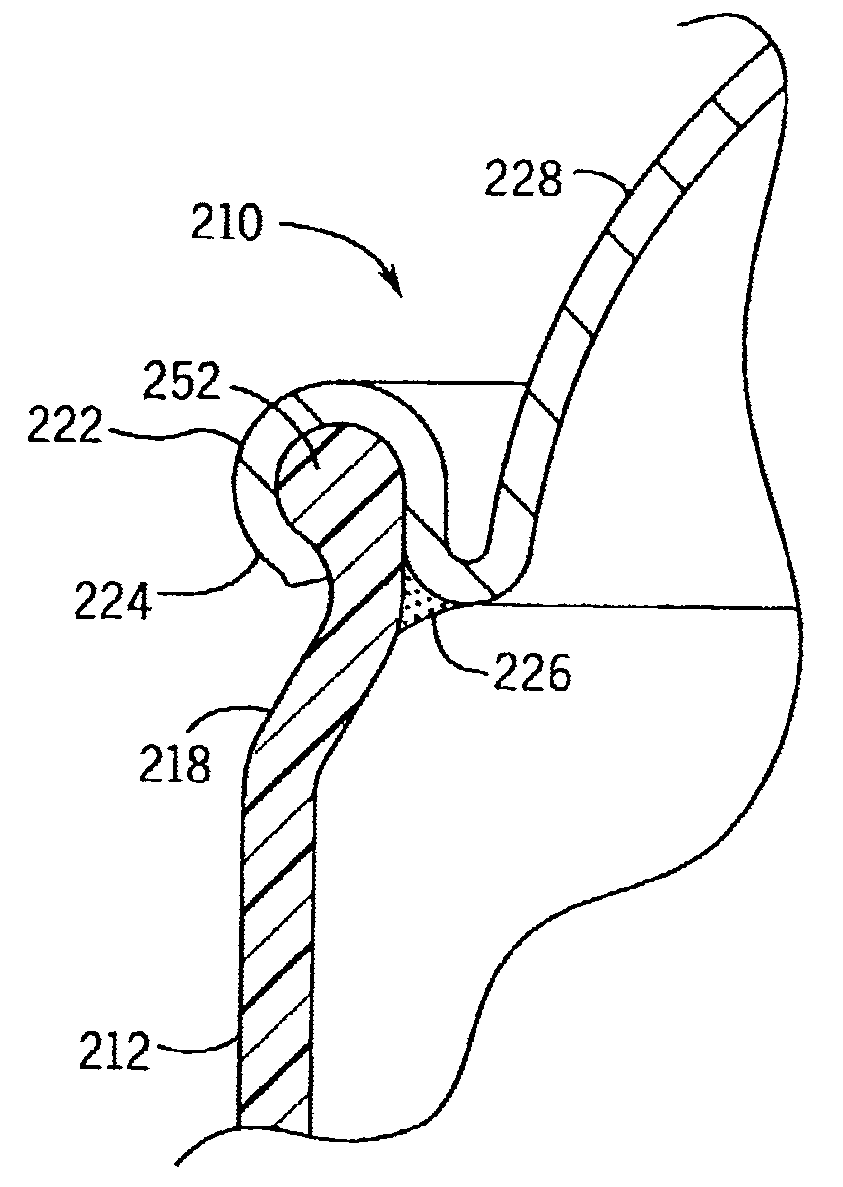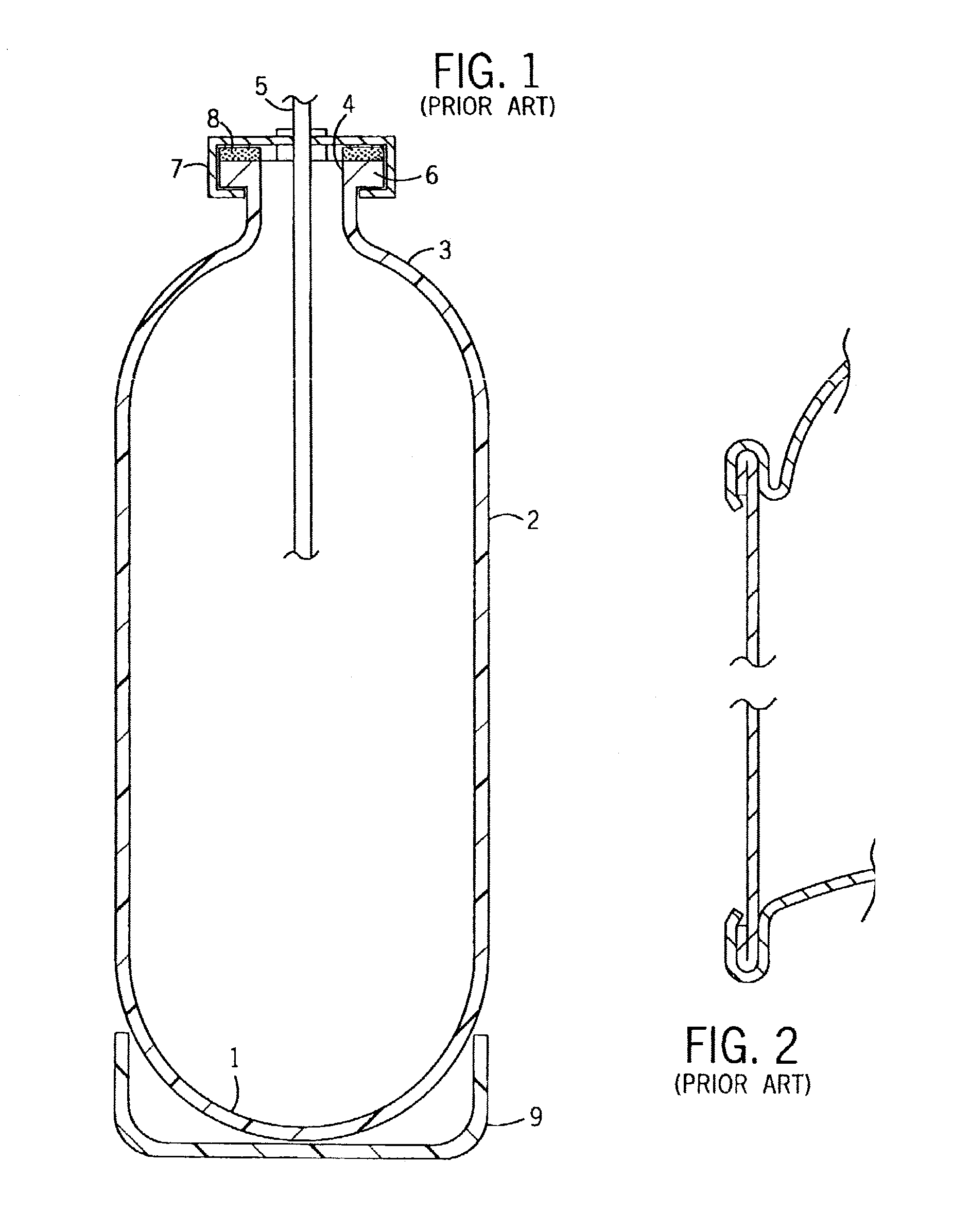Pressure container
a pressure container and container body technology, applied in the field of containers, can solve the problems of inability to produce via injection molding a unitary, bottle failure, inability to meet the requirements of production, etc., and achieve the effect of inexpensive production
- Summary
- Abstract
- Description
- Claims
- Application Information
AI Technical Summary
Benefits of technology
Problems solved by technology
Method used
Image
Examples
first embodiment
[0046]Turning now to the drawings, wherein like and corresponding reference numbers refer to analogous corresponding parts throughout the several views, in the present invention a pressure container is shown generally at 10 in FIG. 3. The pressure container 10 has side walls 12, a metal top 14, and metal bottom 16. The side walls 12 are made of a selected plastic, which may be selected to be transparent, translucent, or opaque.
[0047]Transparent side walls 12 are preferred in that they allow container contents to be displayed to a user, and also show a user something about the condition, color, amount, and the like regarding the contents. Preferably, the side walls 12 are made of a plastic selected from the group consisting of PET, PEN, polycarbonate, polyacrylamide, and mixtures thereof.
[0048]The side walls 12 extend axially and have a top end 18 and a bottom end 20. The metal top 14 is attached to the top end 18 of the side walls 12 in pressure-containing relation at a top seam 22....
embodiment 110
[0053]In a more preferred form, structures are provided in the FIG. 4 embodiment 110 which help reduce the need for such sealants and gaskets still further. Features of the FIG. 4 embodiment that are analogous to the FIG. 3 embodiment features are given similar numbers, albeit indexed by 100. We are not discussing some of these separately in the context of FIG. 4. However, a cross reference to the discussion of FIG. 3 will assist in understanding the structure further.
[0054]In any event, the side walls 112 of the FIG. 4 pressure container 110 differ from the corresponding structure of the pressure container shown at 10 in FIG. 3 in that they include at least one of a bottom bead 150 at the side walls' bottom end 120 and at least one top bead 152 at the side walls' top end 118. Alternatively, there could either be just one top bead but no bottom bead, or just one bottom bead but no top bead. However, having both beads is highly preferred.
[0055]Side walls 112 have such features that a...
PUM
| Property | Measurement | Unit |
|---|---|---|
| Fraction | aaaaa | aaaaa |
| Fraction | aaaaa | aaaaa |
| Fraction | aaaaa | aaaaa |
Abstract
Description
Claims
Application Information
 Login to View More
Login to View More - R&D
- Intellectual Property
- Life Sciences
- Materials
- Tech Scout
- Unparalleled Data Quality
- Higher Quality Content
- 60% Fewer Hallucinations
Browse by: Latest US Patents, China's latest patents, Technical Efficacy Thesaurus, Application Domain, Technology Topic, Popular Technical Reports.
© 2025 PatSnap. All rights reserved.Legal|Privacy policy|Modern Slavery Act Transparency Statement|Sitemap|About US| Contact US: help@patsnap.com



